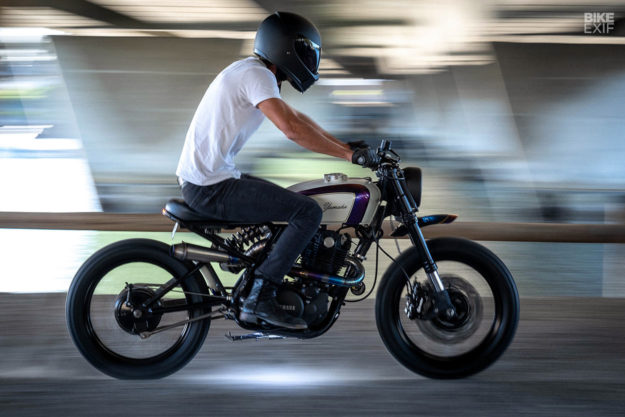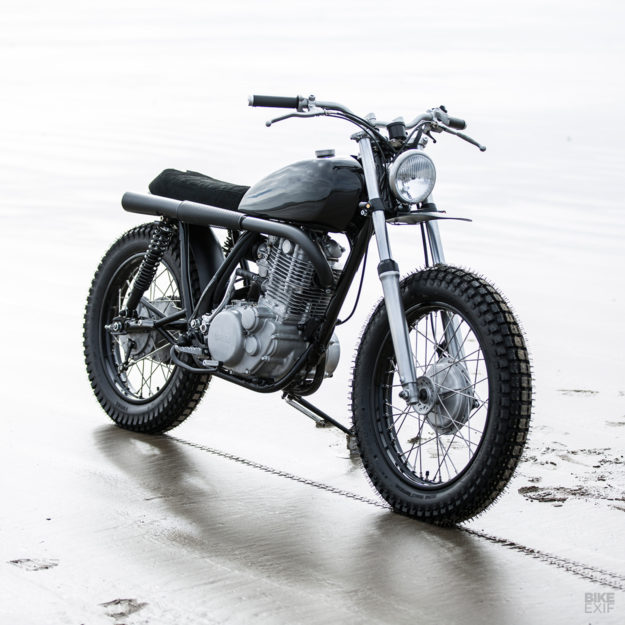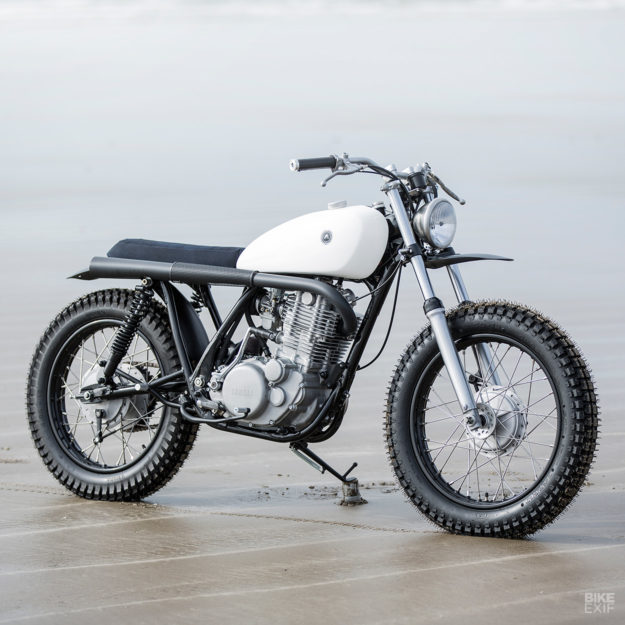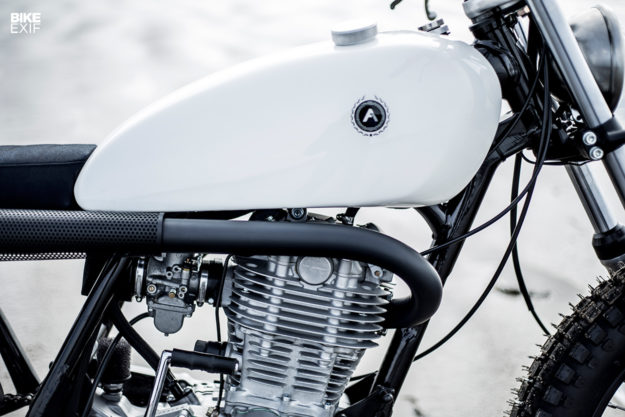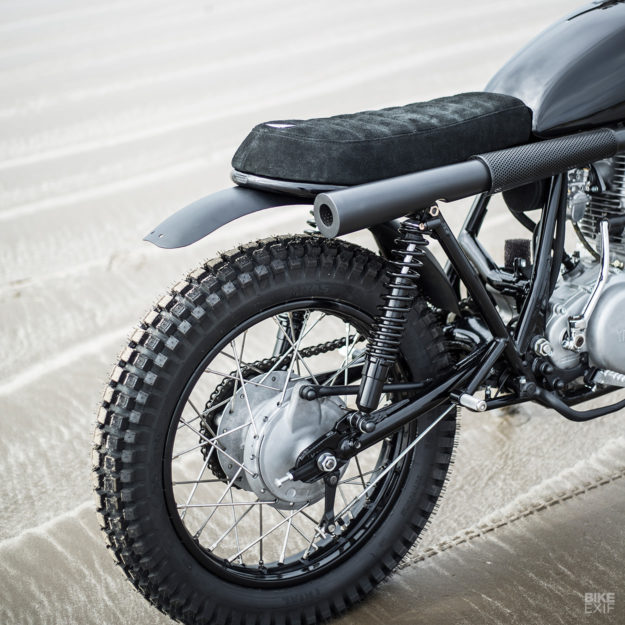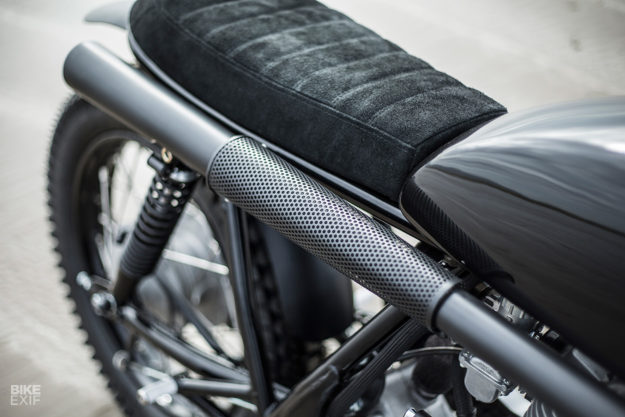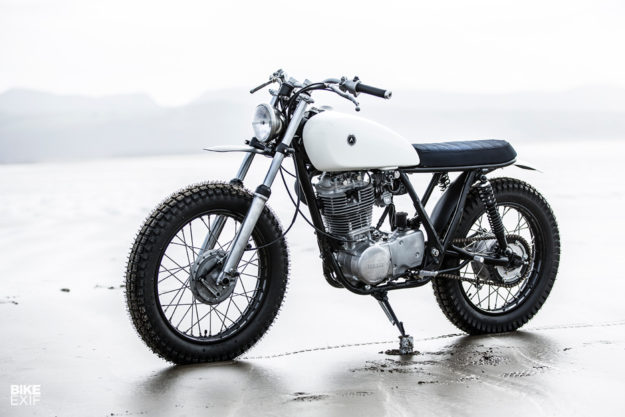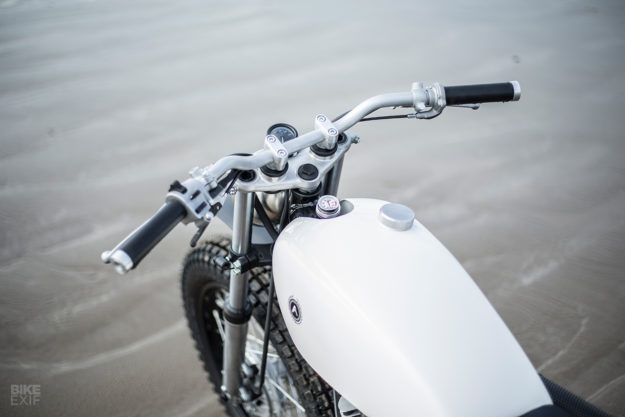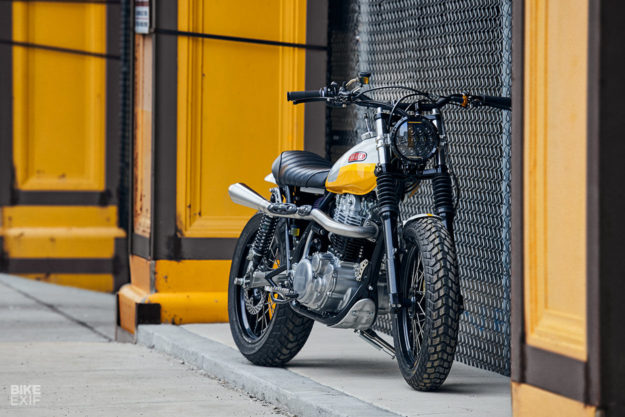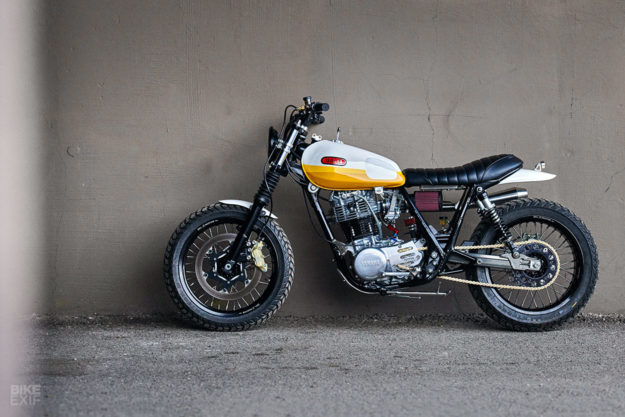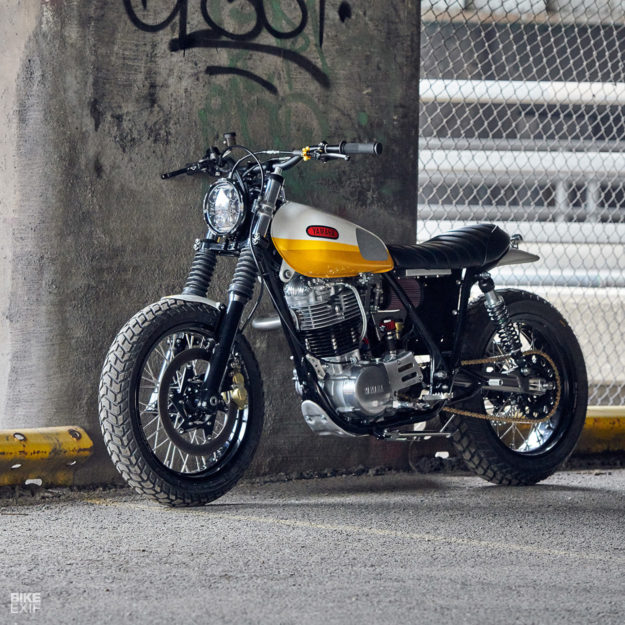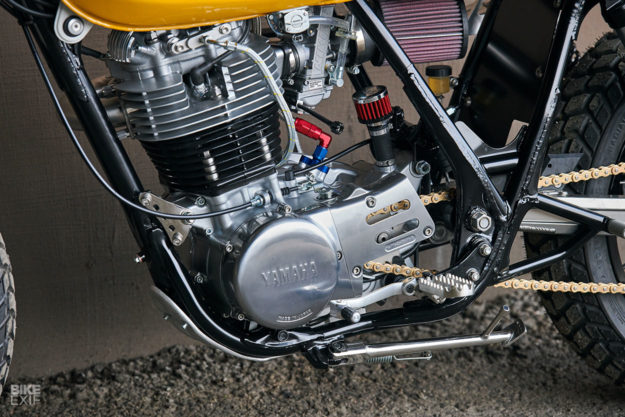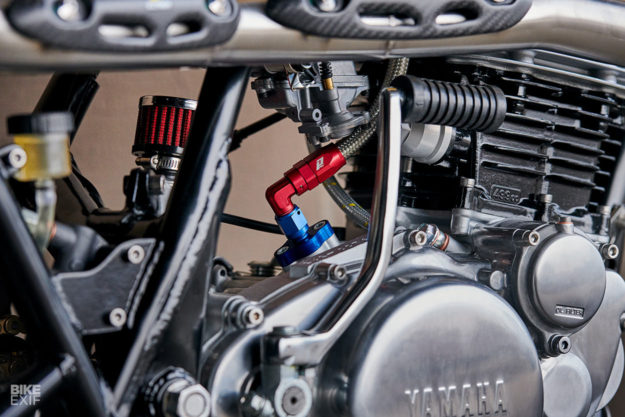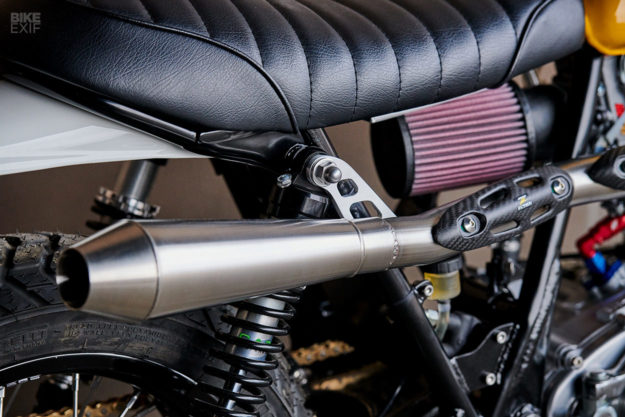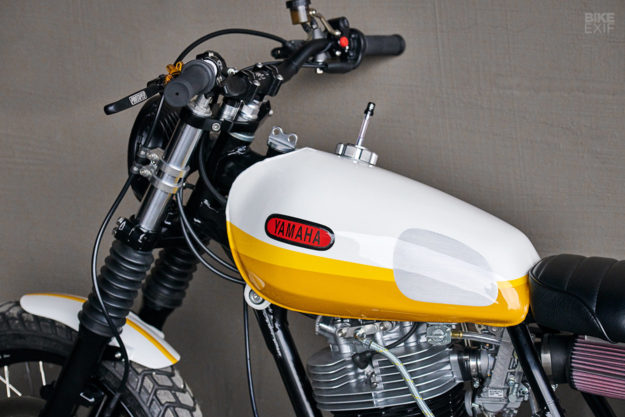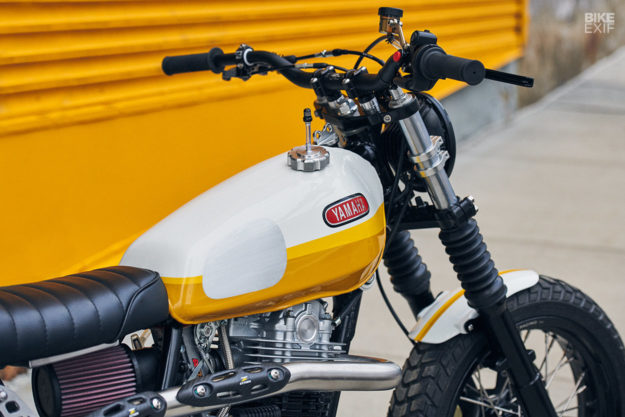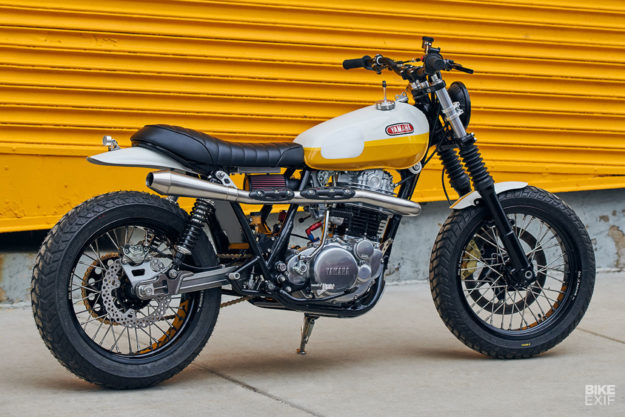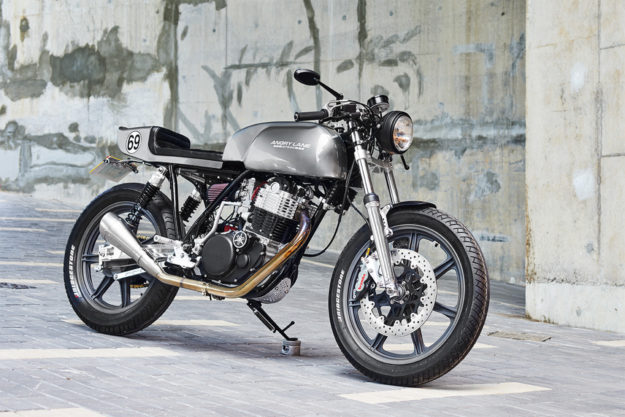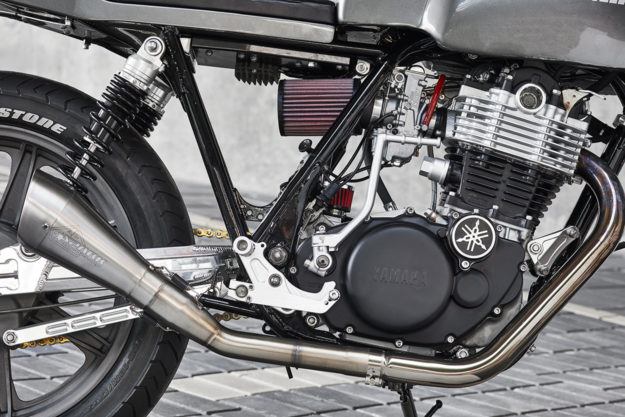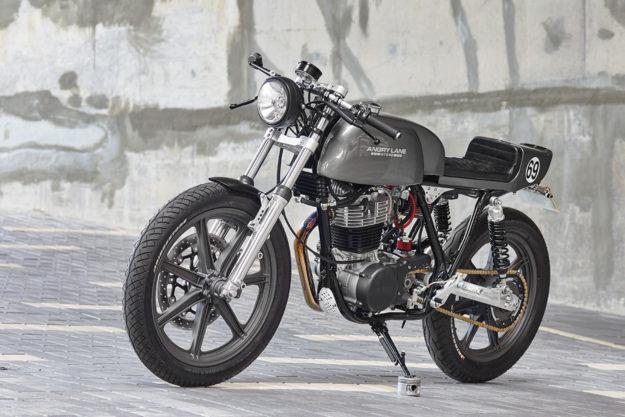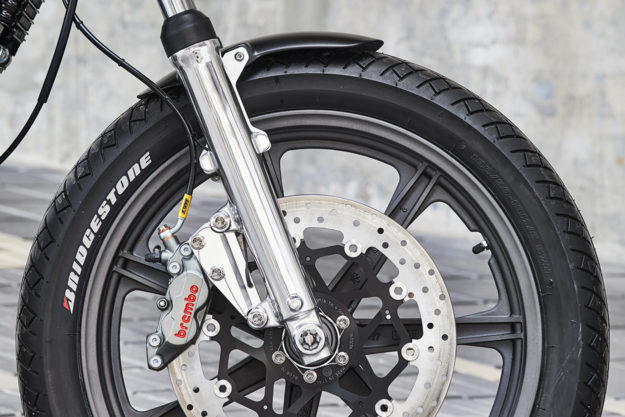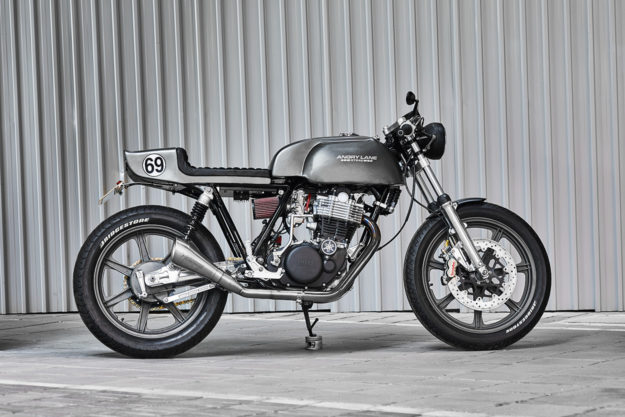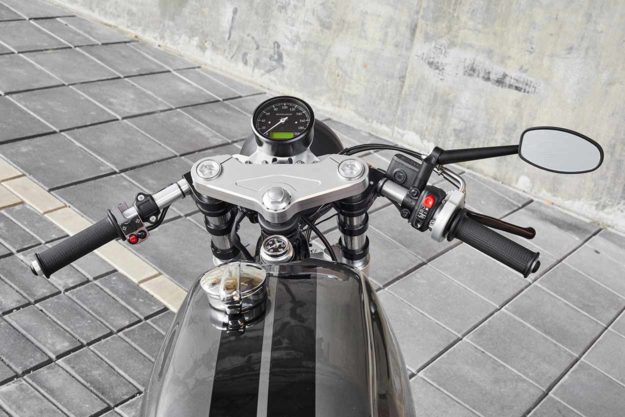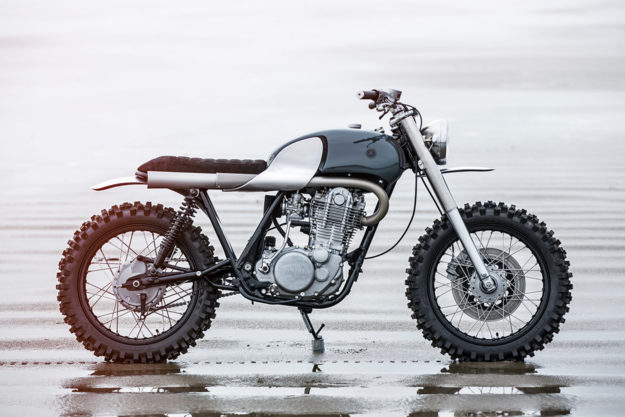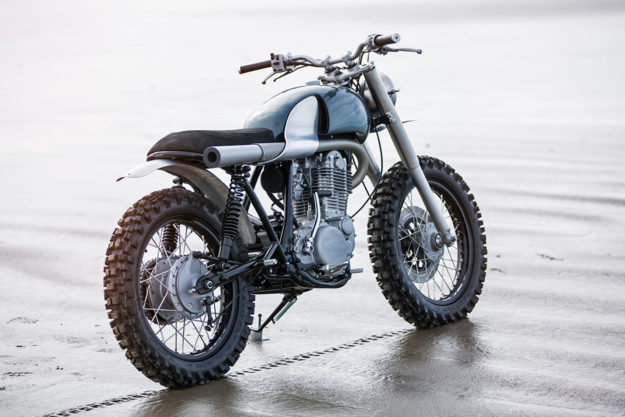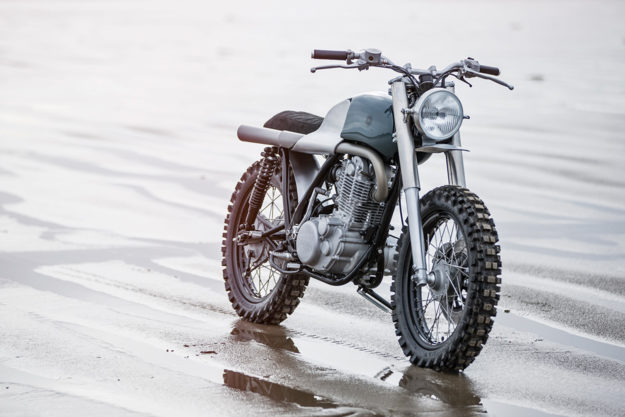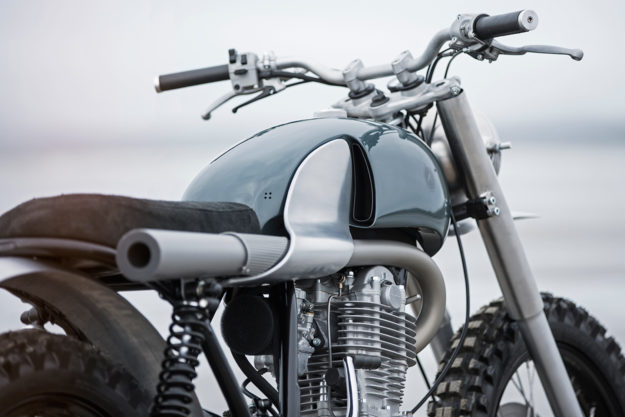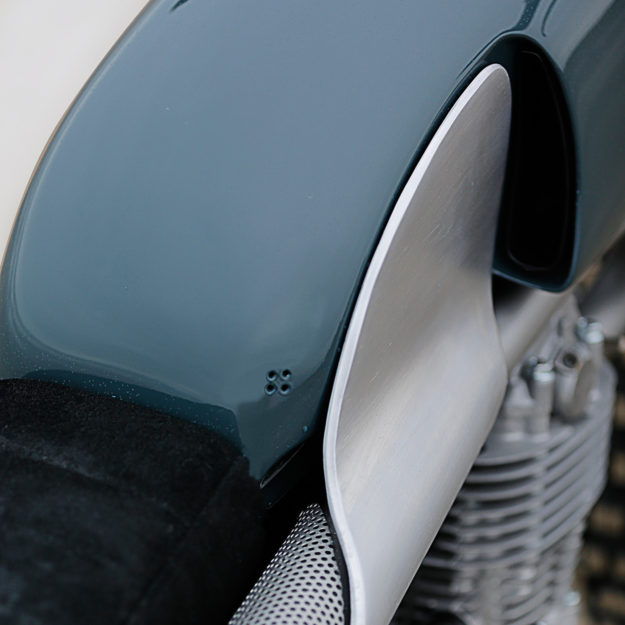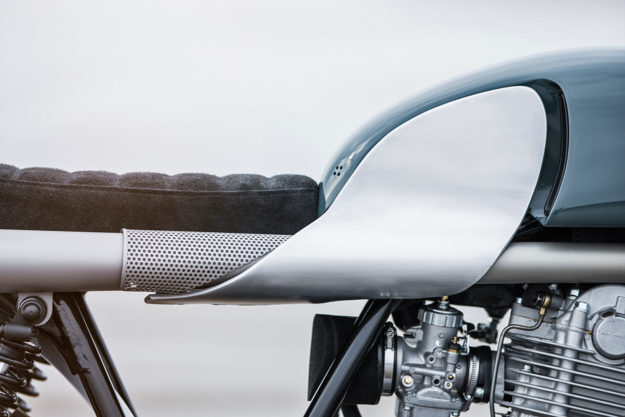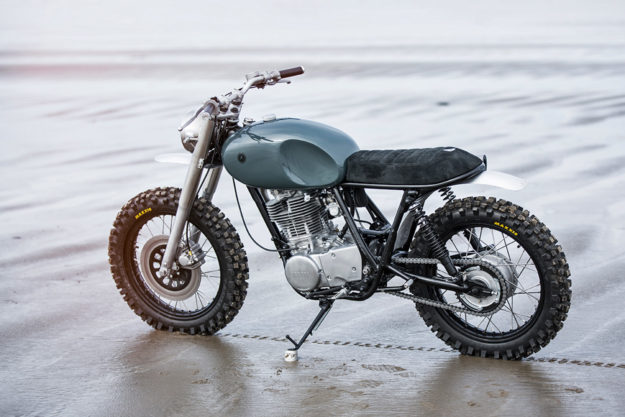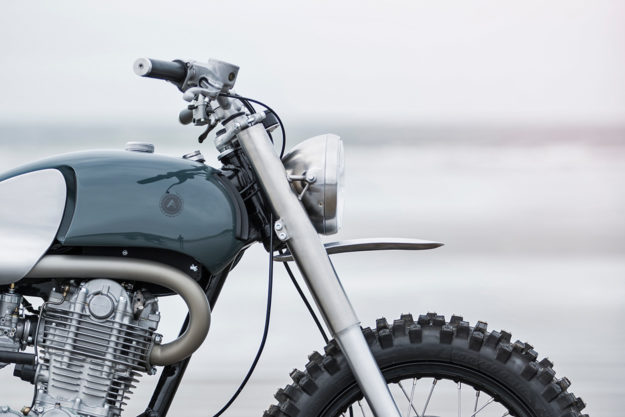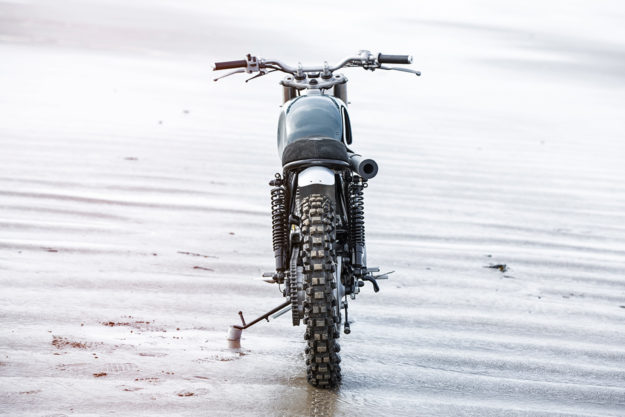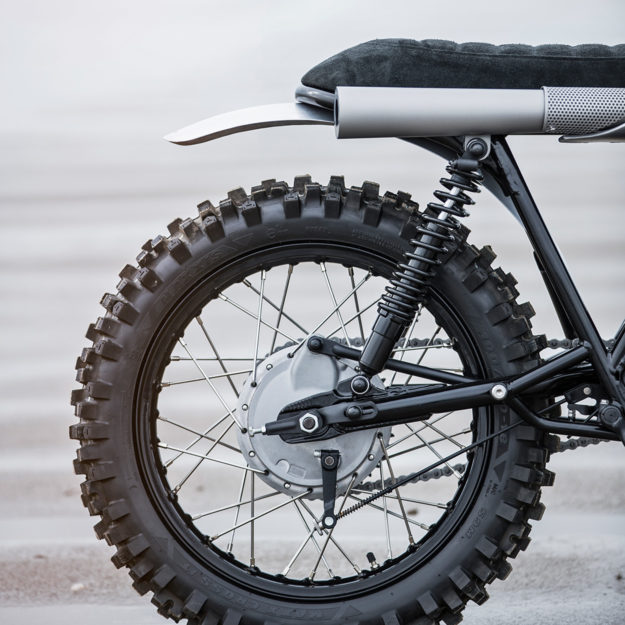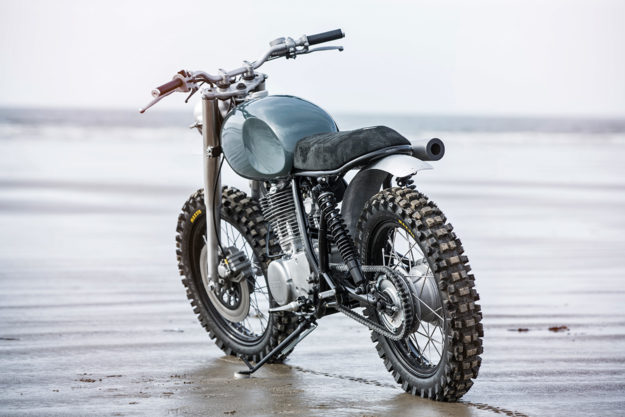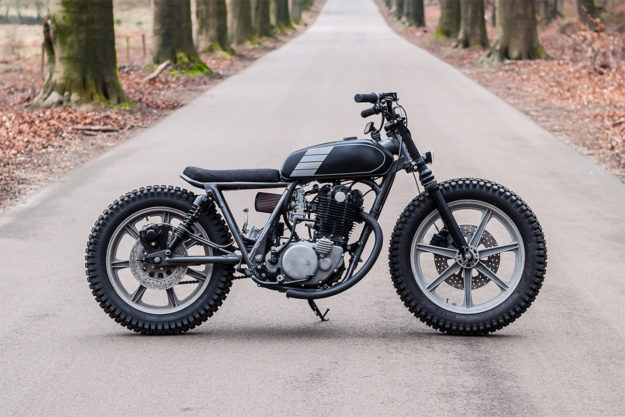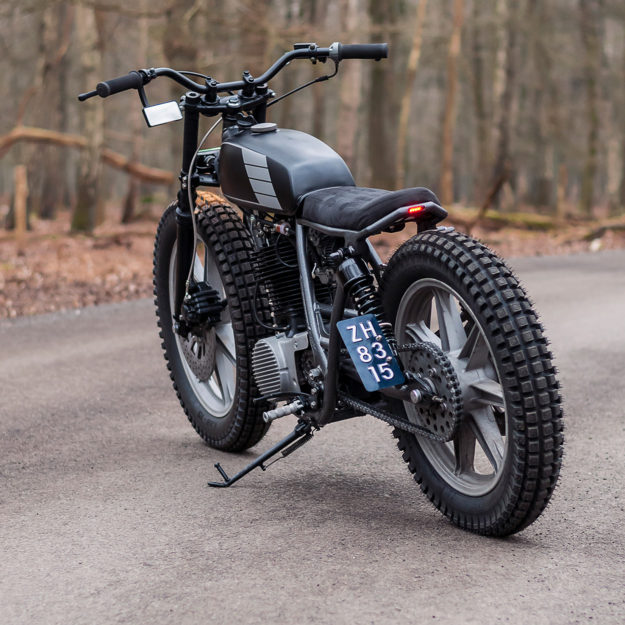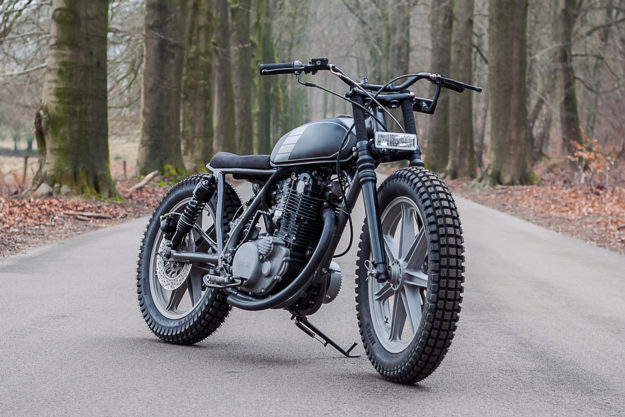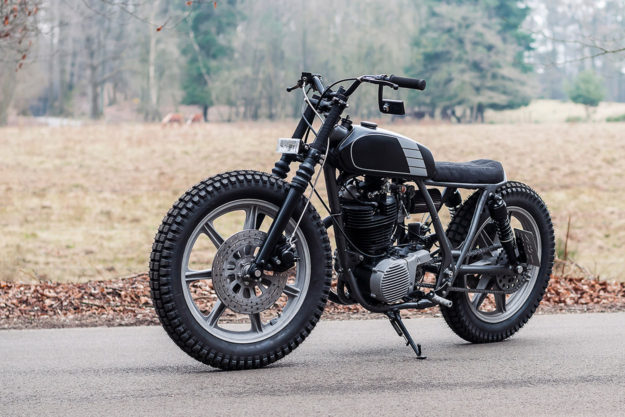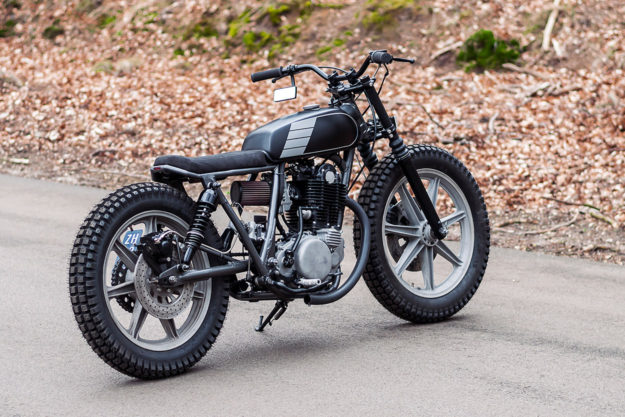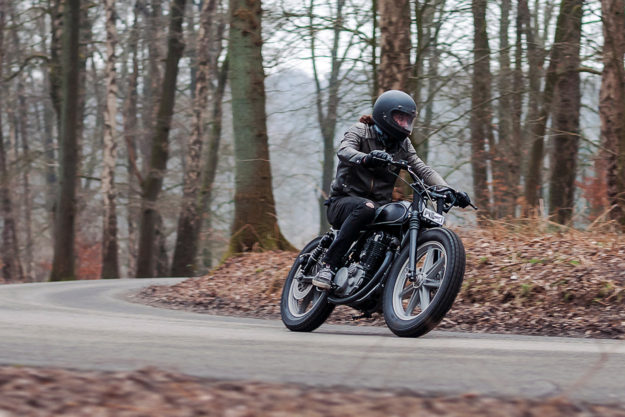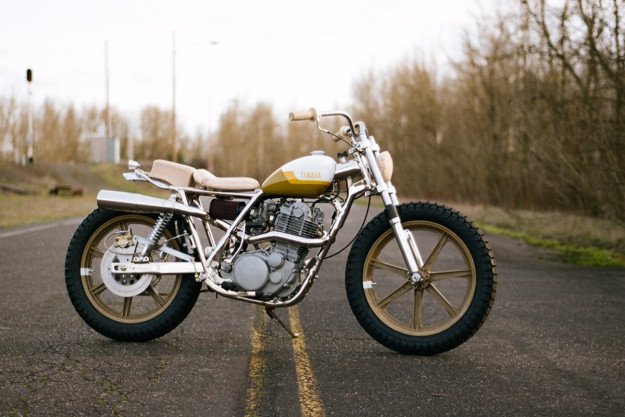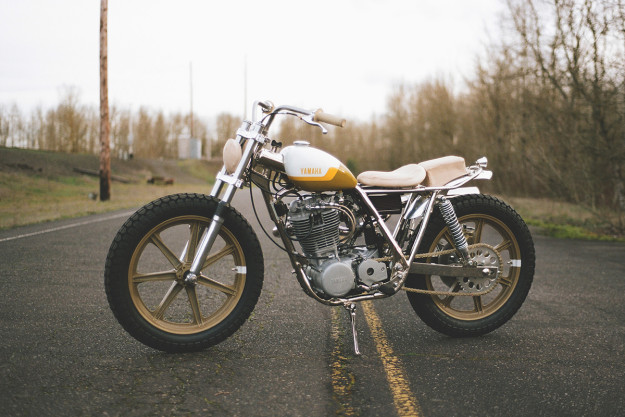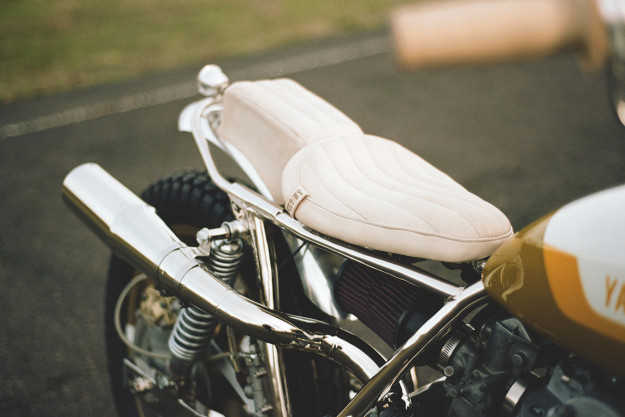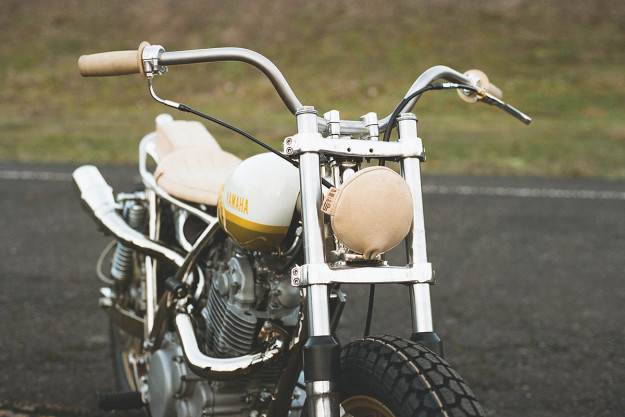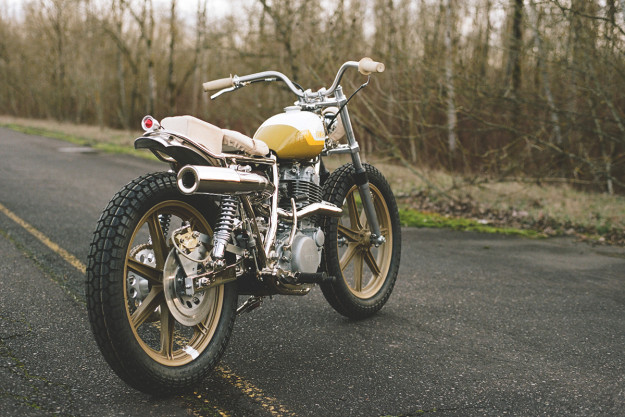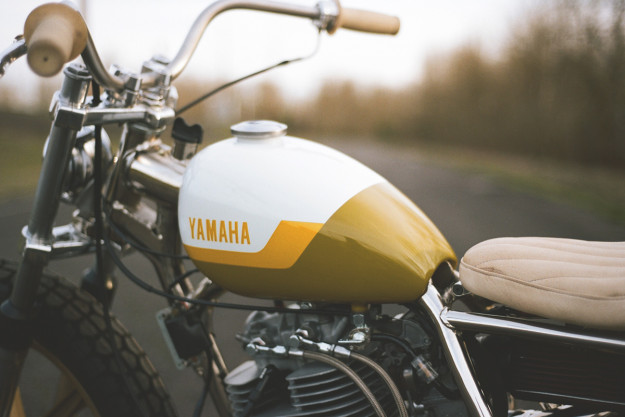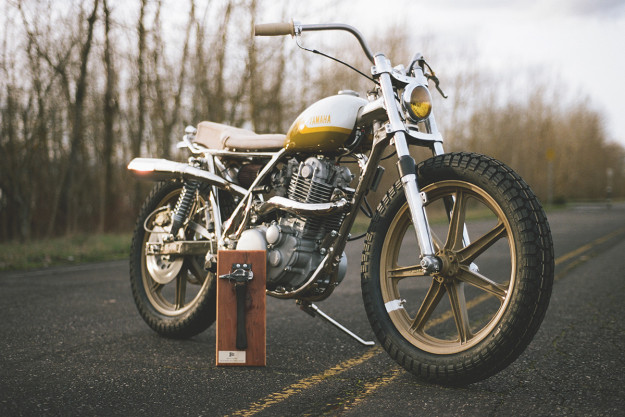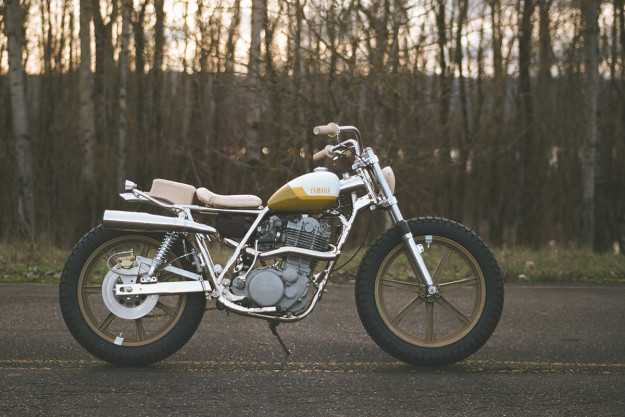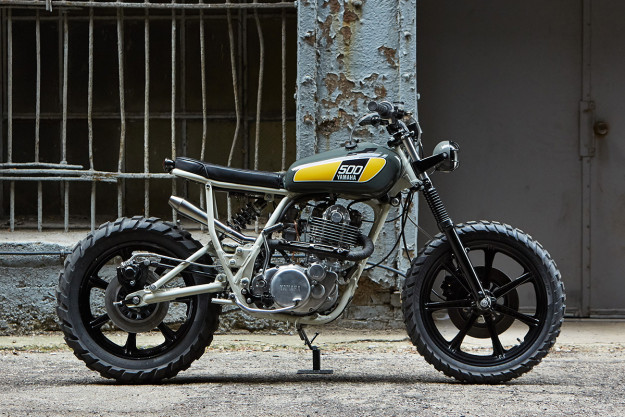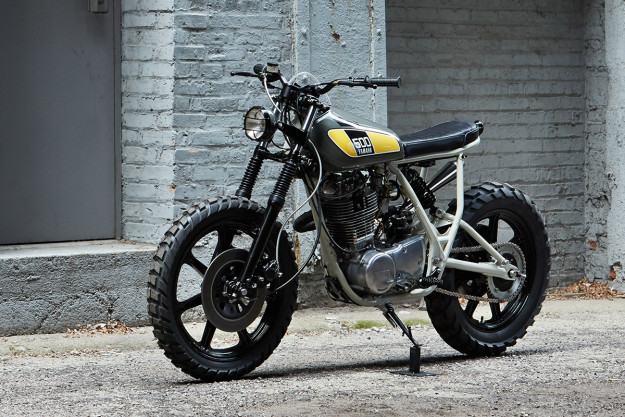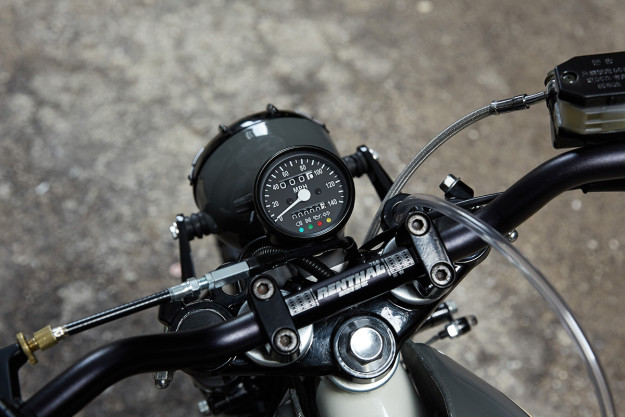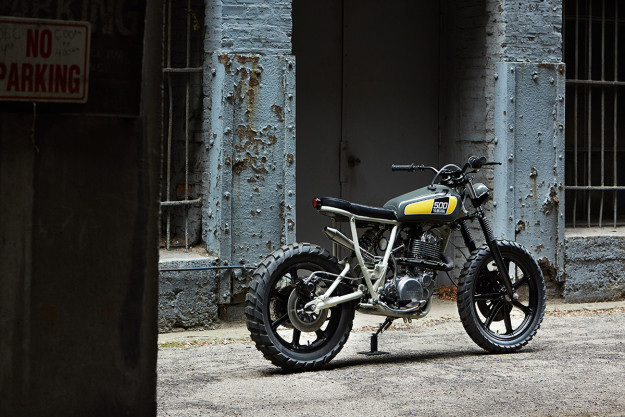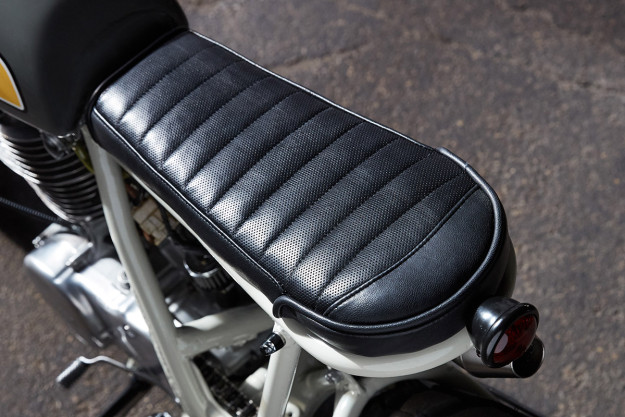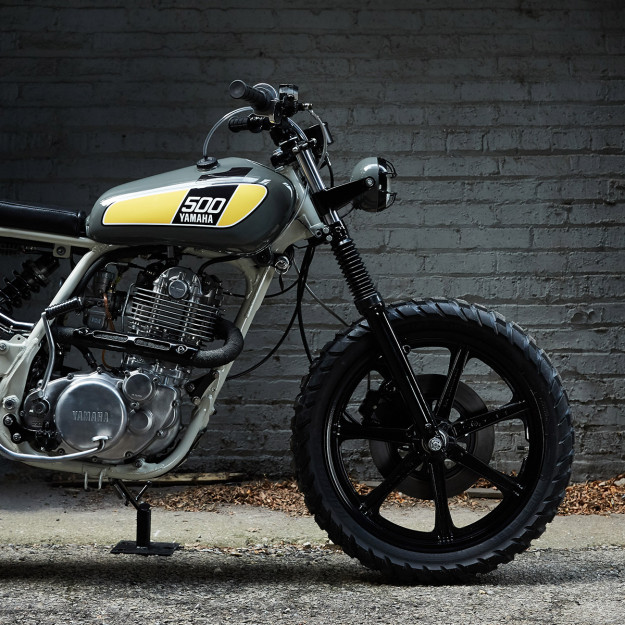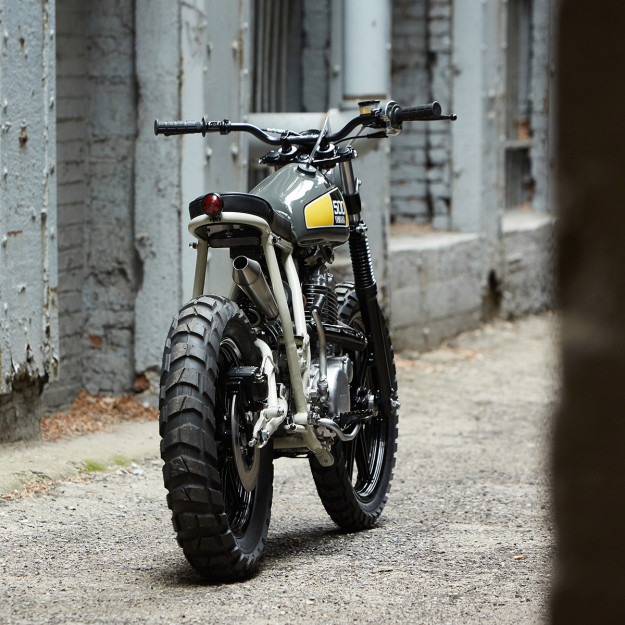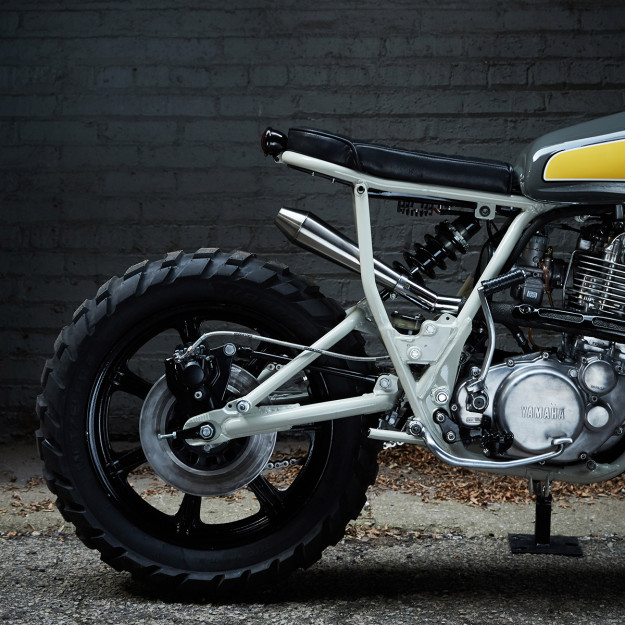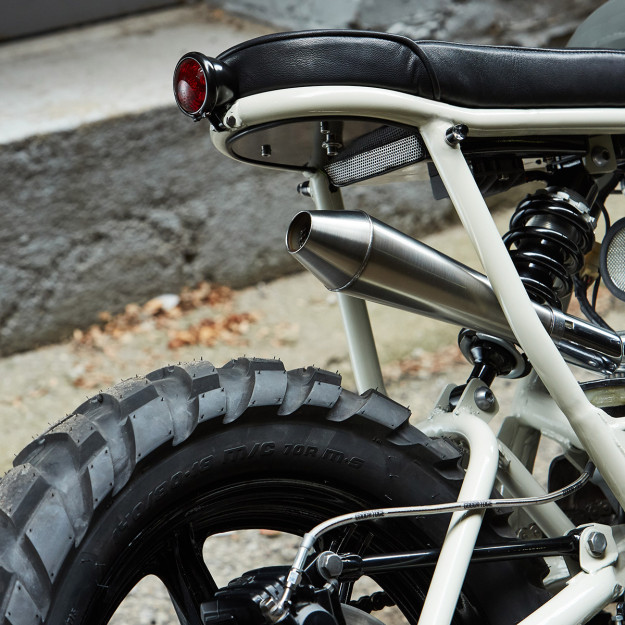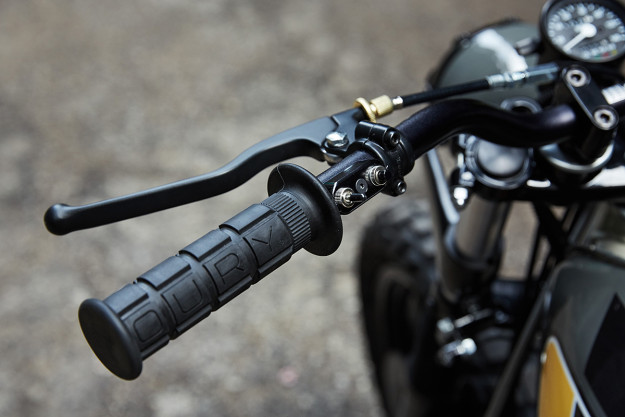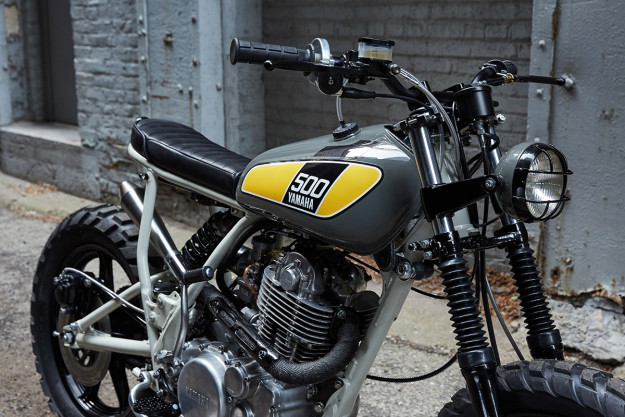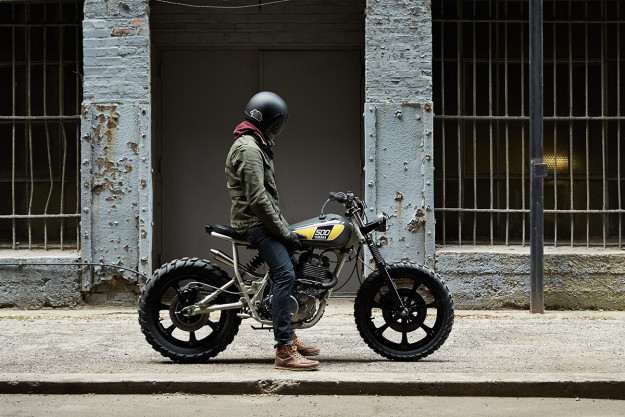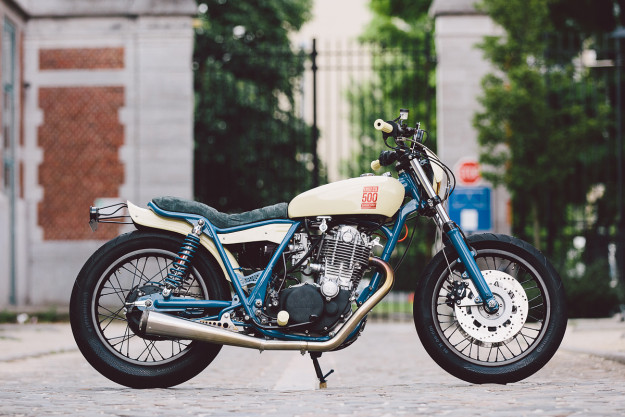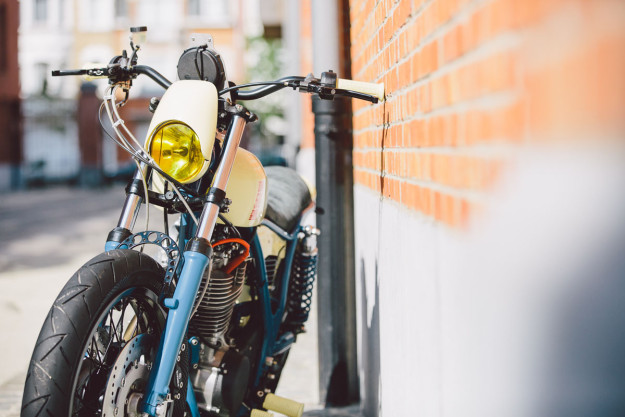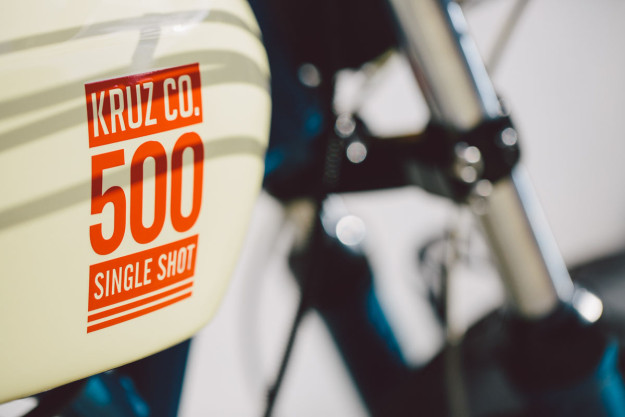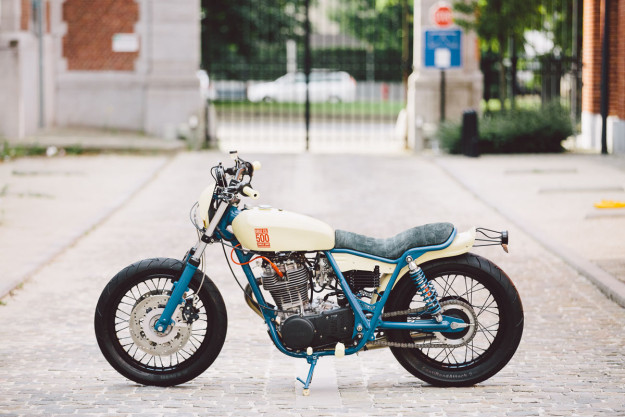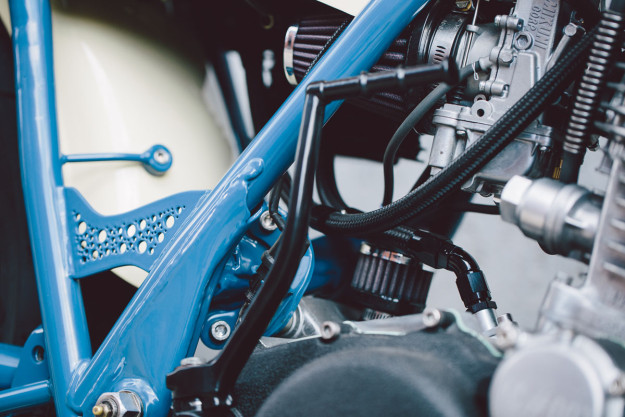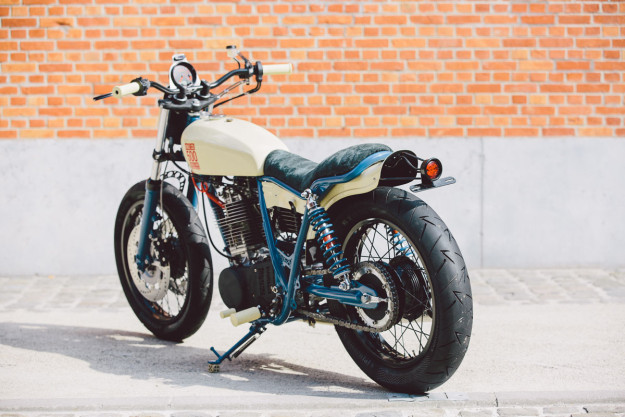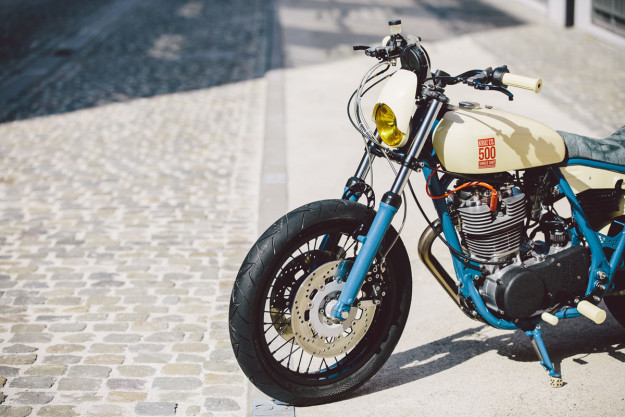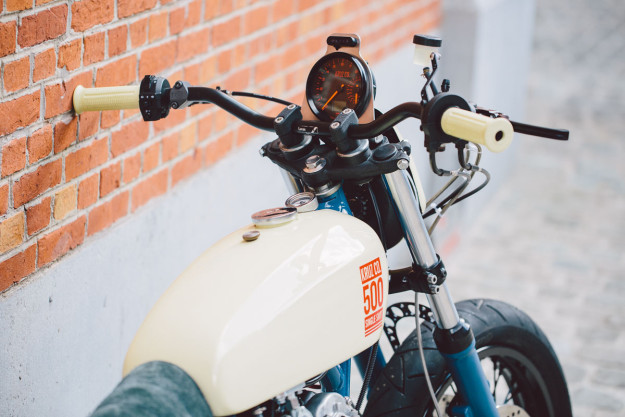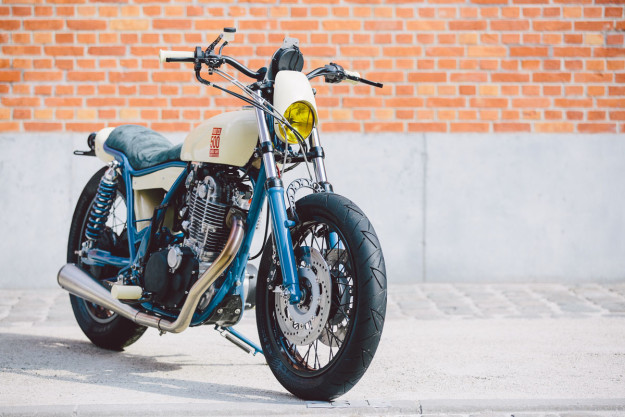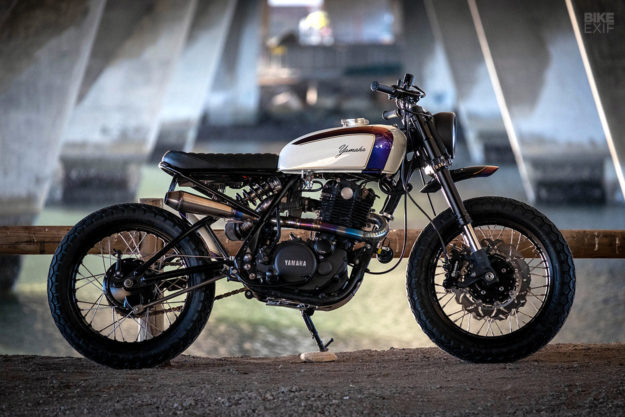
Building a decent custom motorcycle is a far more intensive process than some might realize. Joseph Savor found this out the hard way: it took him seven years to finish this little firecracker of a Yamaha SR500.
Joseph’s based in Sydney, Australia, and customizes bikes part time as Simple Sycles. This SR isn’t his only custom build, but it was the one he started with—and it’s been in a constant state of evolution since. “I’m equally happy and sad to say it’s version four,” he quips.
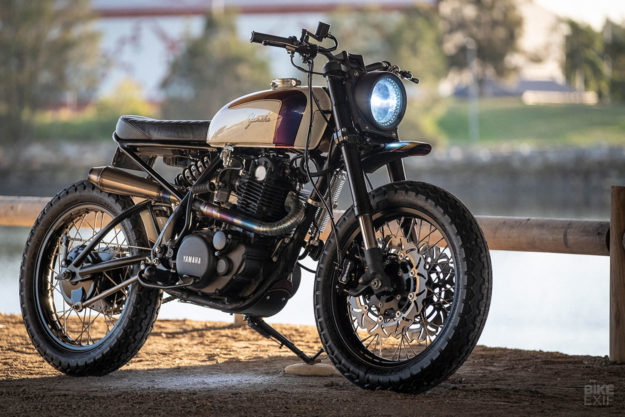
It all started when Joseph bought his first bike: a customized Yamaha SR400 from a well-known local shop. He soon developed an itch to build his own bike, figuring it’d be a walk in the park. So he sold the SR400, broke even, and started hunting for a replacement.
Soon after, Joseph spotted a 1978 SR500 at a wrecker about three hours drive away. It seemed like a good deal—until he got it home. He realized it needed a full motor rebuild.
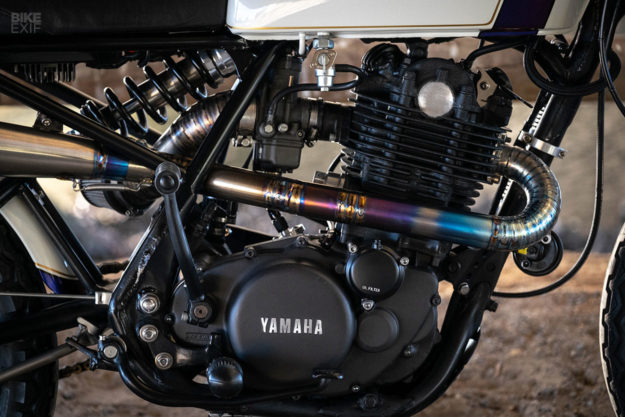
Joseph doesn’t actually have his own workshop—instead, he hoofs it over to his parents’ house in Oatley, and takes over their back yard. “Mum and Dad have put up with a lot of mess and a lot less space in their yard for a long time,” he jokes. “No garage, just tarps to cover up once I’m done, and always praying for no rain so I can keep working.”
He’s also not too big to admit that he can’t do everything, so he’s gradually built up a network of skilled pros that can jump in when needed.
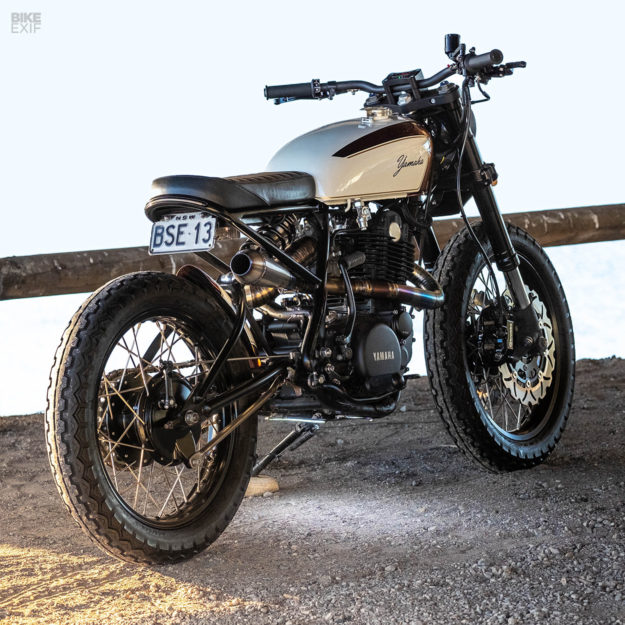
Between Carl Batey from Café Racer in Wattle Flat, and Greg from Greg Ball Engineering, the SR motor was rebuilt and bored out. Capacity was bumped to 535 cc, and the SR was treated to an upgraded cam, rockers and springs, and a 40 mm Dell’Orto carb.
Joseph rode the bike for a while, bolting on a few off-the-shelf bits as he went. But somewhere along the line, he decided to ditch the bolt-ons and go all in. And that meant radical changes to the suspension at both ends.
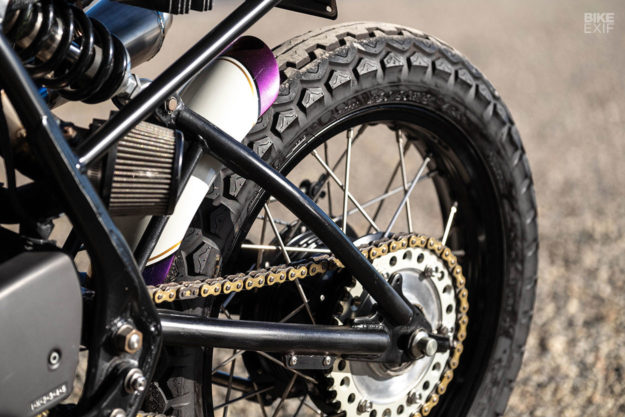
Greg was called in again, this time to graft on the mono-shock swing arm from a Yamaha RD250 LC, and rebuild the subframe to match. The swing arm was sourced from Ebay, and paired up with a Hagon rear shock.
For the front, Joseph sourced a complete Suzuki GSX-R front end from Cognito Moto, complete with triple clamps and an 18” laced front wheel. Along with a Cognito rear loop with an integrated LED taillight and turn signals, they were shipped straight to Greg to install.
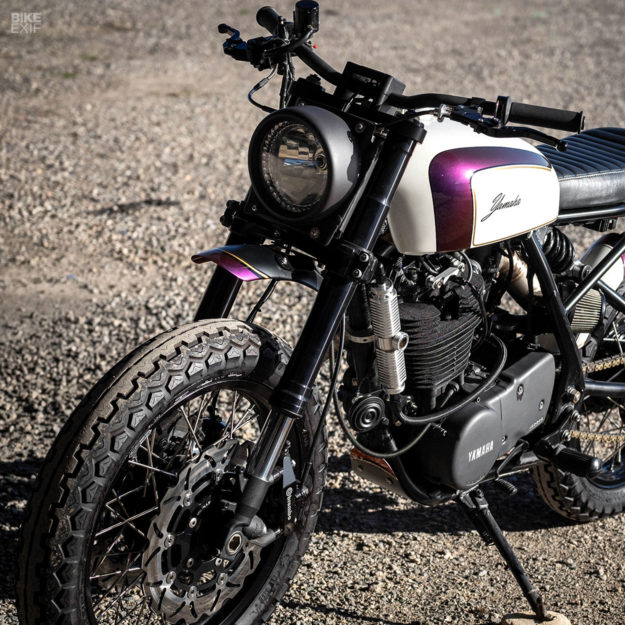
The SR500 was slowly taking shape, but it was also standing parked for extended periods. “Not riding this bike truly became the norm to me,” says Joseph, “with the people around me constantly shaking their heads.”
The remaining mods gradually came together—like the custom seat, which Joseph was pedantic enough to send back to his upholsterer, Streamline Trimming, four times. “My mindset was that this was my bike,” he explains. “I was never going to sell it, so no point in being complacent.”

As the months passed by, the Yamaha was upgraded with a full rewire from DC Electrics. It now boasts a full complement of Motogadget bits, including an m.unit controller, keyless ignition, speedo and LED cockpit lights. The headlight is from JVB Moto, but it’s since been upgraded with more potent LED internals, and integrated turn signals.
The fuel tank is from a Honda CB250, and the fenders are modded SR numbers. Bolt-on bits that still remain include a Rizoma brake reservoir, a mix of POSH and Motogadget switches, a Joker Machine gas cap, vintage-style rubber foot pegs, and CNC levers.
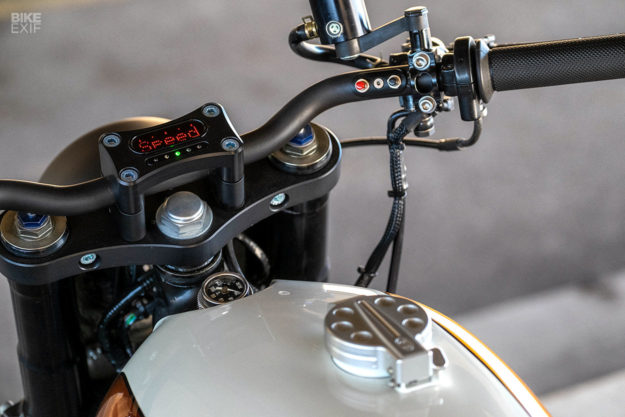
Joseph thought he was all done about a year ago, at which stage the SR had been massaged into a cute café racer. But then he decided ‘scrambler‘ was much more his flavor, and a final round of mods ensued.
The bike was torn down, and built up again with a few new parts. Those included a set of scrambler bars borrowed from another bike, a new oil cooler from Omega Racer, and a Brembo front brake upgrade.
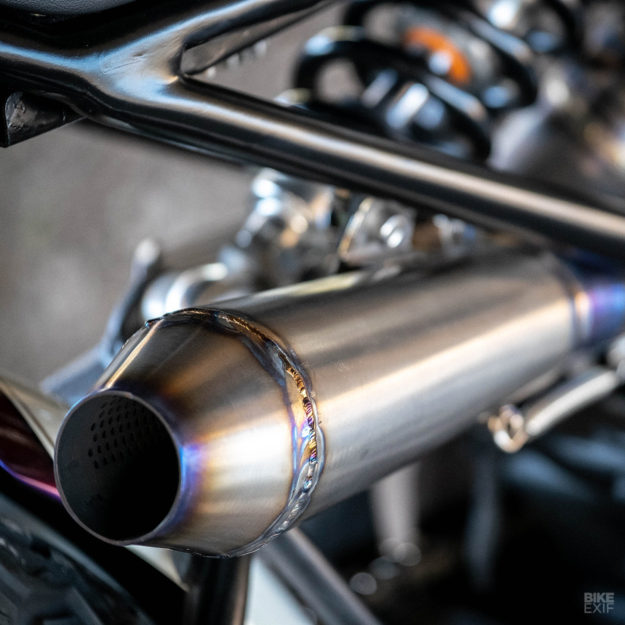
Joseph ditched the custom exhaust that he’d already installed. In its place is a custom titanium header from DNA Customs, hooked up to a titanium muffler from AM Performance. DNA also whipped up an air intake pipe to match.
Colourfuel gave the tank, fenders, frame and calipers all a fresh lick of paint. All while Joseph nipped and tucked a hundred small things in pursuit of perfection.
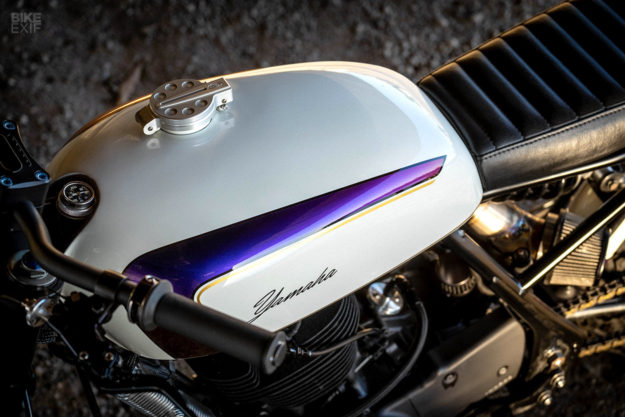
“I’d like to say this was always the plan and image I had in my head,” he sighs, “but this bike has morphed and changed as my style and skill set has evolved. Mistakes have led to lessons, which have created opportunities for me to create my ultimate bike.”
Joseph’s bought, customized and sold a bunch of bikes since staring on the SR535 (some of which funded this build). He’s finally calling it though—the SR535 is officially done, and up for sale.
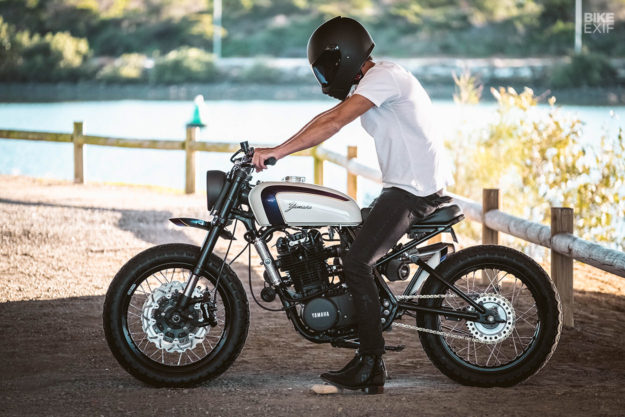
Somebody please buy it soon, before it gets dragged back into the yard for another round.
Simple Sycles Instagram | Images by Jim Robinson
